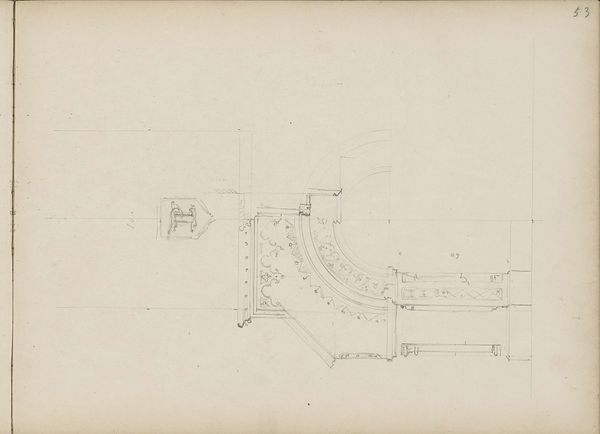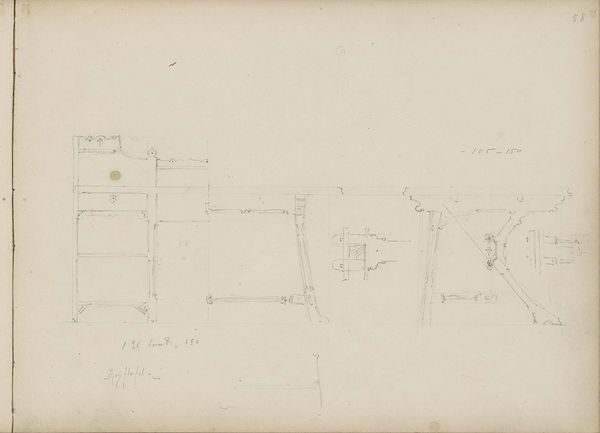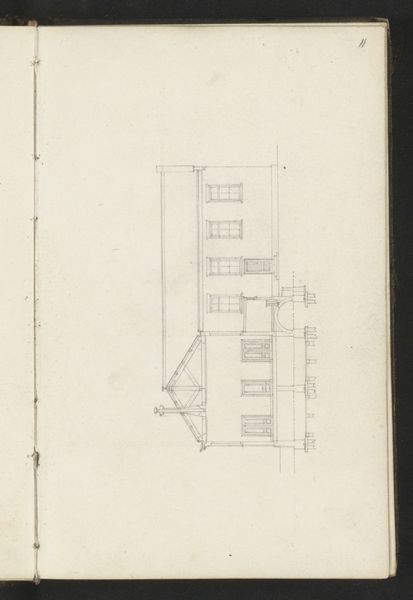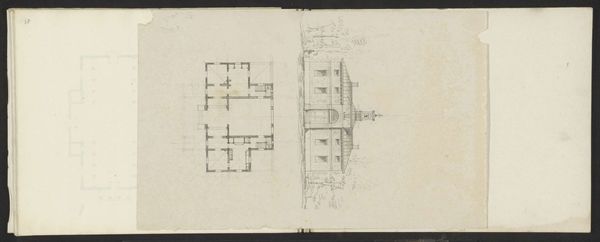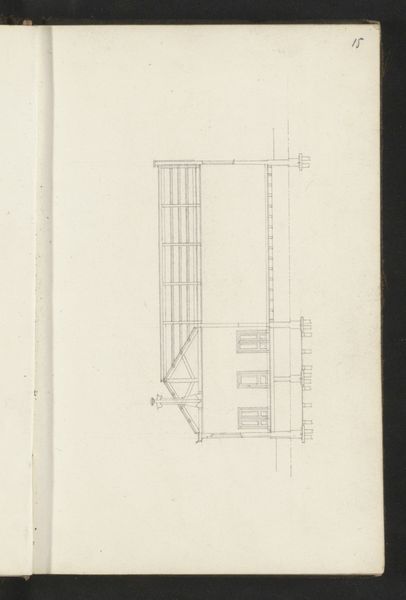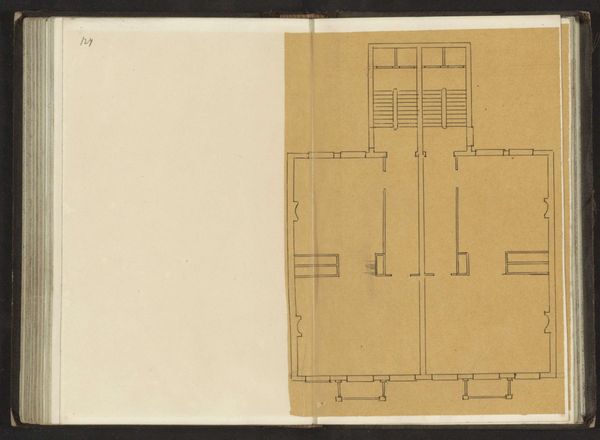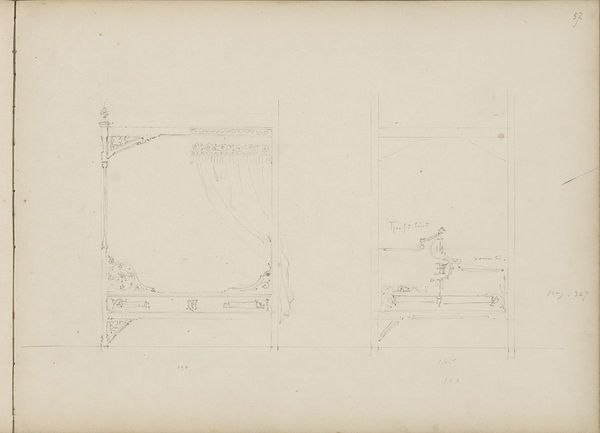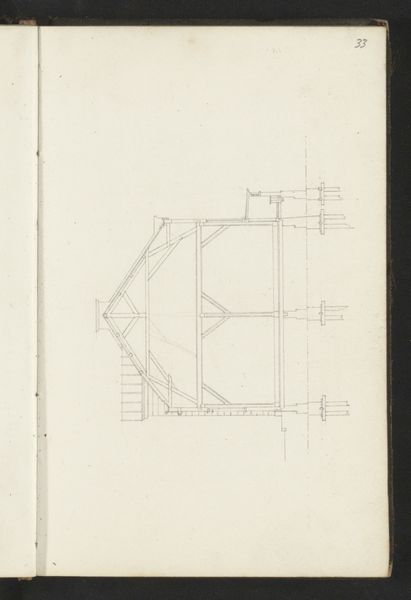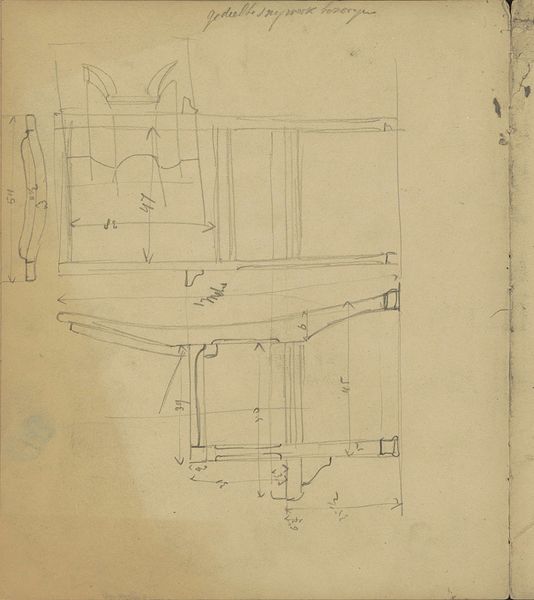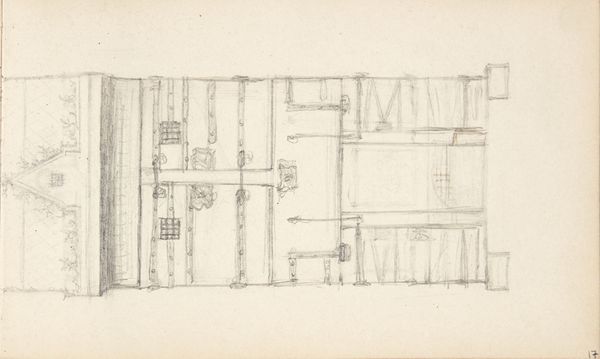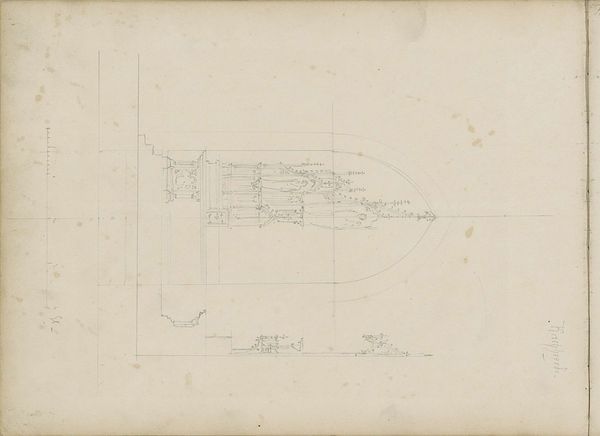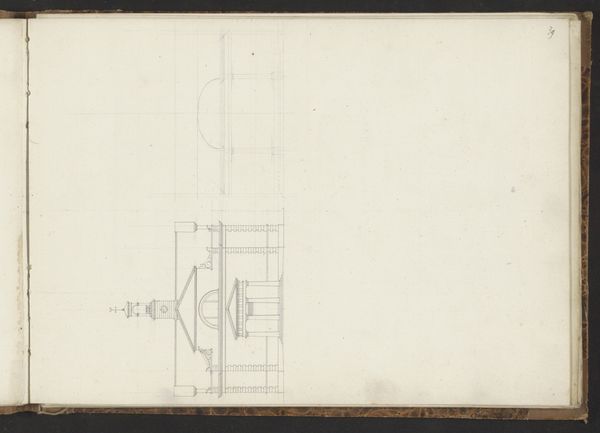
#
amateur sketch
#
aged paper
#
toned paper
#
light pencil work
#
hand written
#
homemade paper
#
ink paper printed
#
incomplete sketchy
#
hand drawn type
#
personal sketchbook
Copyright: Rijks Museum: Open Domain
Curator: We’re looking at “Biechtstoel, Grave,” a pencil drawing by Pierre Joseph Hubert Cuypers, made sometime between 1857 and 1859. It's currently held in the Rijksmuseum collection. Editor: My first impression is how fragile this sketch feels. The pale lines barely holding the architectural forms on this toned paper… It's like a whisper of a building. Curator: Absolutely. The use of light pencil work on aged paper lends it an ethereal quality, hinting at the personal, almost private nature of a sketch intended for a personal sketchbook. Editor: And those handwritten annotations! It speaks to the material process, right? Cuypers wasn’t just visualizing; he was noting, correcting, maybe even problem-solving directly on the page. You can feel him working through the architectural problems. Curator: Indeed. Consider the confessional Cuypers has depicted; these spaces are crucial for Catholic rituals. It highlights confession as both a personal and a performative act, central to the cultural and spiritual lives of people during the era. Editor: And confessionals themselves were pieces of crafted furniture – considered for their utility, their size relative to the church layout, and how they contributed to the sacred experience. It’s all bound to the materiality of belief. Curator: Also consider how a hand-drawn design might communicate devotion to his client versus pre-printed. It's more personal—almost an extension of the client’s personal faith. Editor: You're right, the materiality here also acts to solidify the connection, and that act makes this simple drawing, just some “light pencil work,” pretty weighty. Curator: By decoding its architectural symbolism, considering its spiritual purposes, this amateur sketch shows continuity, and also offers us insights into the cultural and spiritual identity connected with sacred spaces. Editor: Agreed. And thinking through Cuypers’ marks, his process—it brings the materiality of both architectural design and religious experience closer, more immediate. Thanks for unpacking this work together! Curator: The pleasure was all mine!
Comments
No comments
Be the first to comment and join the conversation on the ultimate creative platform.
